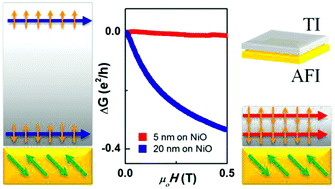Time-reversal symmetry (TRS) breaking of the topological insulators (TIs) is a prerequisite to observe the quantum anomalous Hall effect (QAHE) and topological magnetoelectric effect (TME). Although antiferromagnetism as well as ferromagnetism could break the TRS and generate massive Dirac surface states in the TIs, no attention has been paid to the antiferromagnet-TI heterostructures. Herein, we report the magnetotransport measurements of Bi2Se3 proximately coupled to antiferromagnetic NiO. Thin films of Bi2Se3 were successfully grown on the NiO (001) single crystalline substrates by molecular beam epitaxy. Unexpectedly, we observed a strong suppression of the weak antilocalization effect, which is similar to the case of TIs coupled to the ferromagnetic materials. For the 5 nm-thick Bi2Se3 sample on NiO, we even observed a crossover to weak localization at 2 K. These behaviors are attributed to the strong magnetic exchange field from the Ni 3d electrons. Our results show the effectiveness of the antiferromagnetic materials in breaking the TRS of TIs by the proximity effect and their possible applications for QAHE and TME observations.

